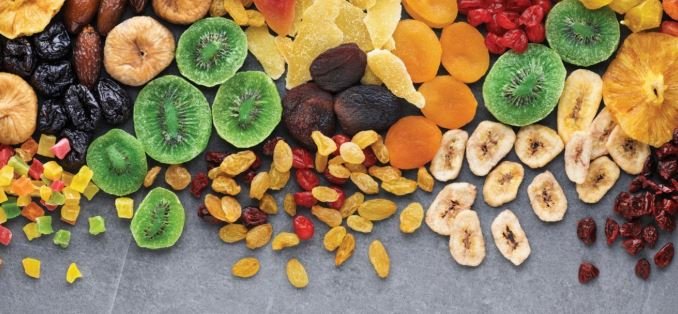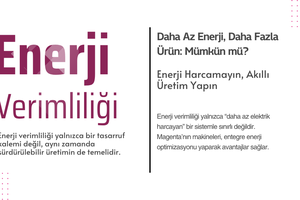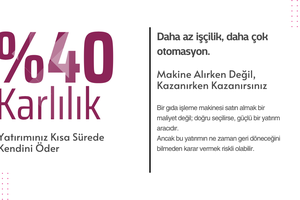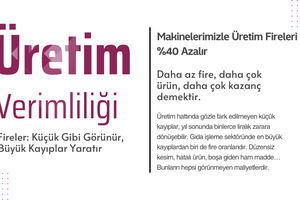Global Dried Fruit Market and Turkey-Uzbekistan Competition: Production, Export, and Strategic Positioning
In global food trade, the rising demand for healthy snacks is reshaping the dried fruit market. Especially the shift toward functional and organic products increases the value of traditional fruits like dried grapes, apricots, and figs. This makes the sector not just an agricultural domain but also a strategic field of competition. In 2023, the global trade volume of dried fruit products under HS 0813 reached USD 3.01 billion; this figure is a significant indicator reflecting the confluence of traditional consumption trends and new market dynamics.
Within this market, Turkey and Uzbekistan stand out as both producers and exporters, each positioned differently in the global arena with distinct advantages and risk profiles. Turkey continues its leadership in sultana raisins, Malatya apricots, and Aydın figs, while Uzbekistan is experiencing rapid growth thanks to low‑cost production and proximity to the Greater Eurasian market.
Below is a structured summary (Magenta Machine summary) and a comparative exposition between Turkey and Uzbekistan:
Global Market (HS 0813)
- In 2023, the global trade volume under HS 0813 (“Dried Fruits”) reached USD 3.01 billion, marking a slight annual decline of 0.7 %.
- The largest sub‑category is raisins (dried grapes), followed by dried apricots.
- For dried apricots in 2023, global trade amounted to USD 585 million, a 7 % increase. Turkey is a prominent supplier in this segment.
- Demand drivers include health snack trends, organic labeling, no added sugar formulations, and innovations such as functional or probiotic coatings.
Turkey Market
Production Position
- In 2022, Turkey produced around 803,000 tons of apricots, ranking first globally. Malatya is the key production region.
- For grapes and figs, the Aegean region (Manisa for sultana, Aydın for figs) plays a central role, supported by strong export logistics infrastructure.
Export Performance (Recent Season/Year)
- Sultana raisin exports (seedless grapes): ~USD 490 million in 2023/24 (≈ +11 % year-on-year).
- Dried apricot exports: USD 399 million; although volume dropped by ~17 %, the unit price rose ~10.5 %, cushioning revenue decline.
- Dried fig exports: USD 241 million, ~67,700 tons, shipped to 121 countries.
- In first 7 months of 2024, total dried fruit export revenues reached USD 933 million (versus USD 824 million in the prior period) — a strong value increase.
Strengths / Risks
- Strengths: developed processing & logistics infrastructure, wide geographical dispersion (Aegean / Eastern Anatolia), brand recognition, pricing power.
- Risks: yield volatility due to climate, exchange rate shocks, strict EU standards and pesticide/aflatoxin controls, shipping & energy costs.
Uzbekistan Market
Production Position
- In 2022, Uzbekistan produced ~451,000 tons of apricots, ranking second globally. Its continental climate is favorable to drying processes, and investment in orchard expansion is rising.
Export Performance (HS-based)
- Raisins (HS 080620): USD 77.5 million in 2023, down ~26 % compared to 2019. Major buyers include Russia, Kazakhstan, etc.
- Dried apricots (HS 081310): USD 19.8 million from about 13,000 tons; main markets include Turkey (USD 4.26 million), China (USD 4.25 million), Russia (USD 2.73 million), Israel (USD 1.5 million), Iraq (USD 1.16 million).
- In 2024, fresh apricot shipments reached 65,000 tons / USD 62.3 million, feeding into drying supply chains.
Strengths / Risks
- Strengths: abundant raw material supply (apricots, grapes), lower labor costs, proximity to CIS/EAEU markets, state agricultural/export incentives.
- Risks: gaps in processing & quality standardization (calibration, moisture, SO₂ control), certification (GlobalG.A.P., organic), access to finance, logistical reliance on transit / transshipment
Demand Trends & Pricing
- Value growth > Volume growth: As seen in Turkey, unit price increases carry total revenue even when volumes decline.
- Product innovation: “fruit gums”, probiotic coatings, syrup infusions, and organic lines are increasingly demanded—especially by EU & Gulf retail chains.
Competition & Positioning (Turkey vs. Uzbekistan)
- Turkey: Core products are sultana raisins, dried apricots, dried figs. Mature production infrastructure with advanced sorting, metal detection, and packaging. Pricing allows for brand premiums. Target markets: EU, USA, MENA, Asia. Risks include climate, compliance with food safety, costs.
- Uzbekistan: Core products are raisins and dried apricots. Production infrastructure is developing, with gaps in quality standardization. Pricing strategy is more competitive, focusing on volume growth. Target markets: CIS/EAEU (Russia, Kazakhstan), China, Turkey. Challenges in certification, financing, and logistics.
Trade Fair & Business Development Context
- Events like BCH Expo / UzProdExpo in Uzbekistan bring together fresh-dried fruit and food processing networks, offering efficient B2B linkages among producers, processors, and importers.
Strategic Recommendations (Quick Wins)
For Turkish Exporters / Processors
- Value-added product lines: organic, probiotic-coated, fruit juice-infused “premium” ranges—especially suited for EU retail/private labels.
- Contract farming and forward purchasing to stabilize pricing amid climate volatility.
- Market diversification: North American e-grocery, GCC premium re‑export hubs (UAE as hub), etc.
For Uzbek Producers / Processors
- Invest in quality standards: calibration, moisture / SO₂ monitoring, metal detection, certifications (BRC / GFSI) — critical for access to EU / UK markets.
- Position products in the China–Turkey–Russia triangle: 2023 apricot flows are heavy along this axis. Strengthen packaging and branding to raise per‑ton revenue.
- Raisin capacity optimization: reverse the 2019–2023 decline by modernizing drying tunnels and aligning with contract farming models.




